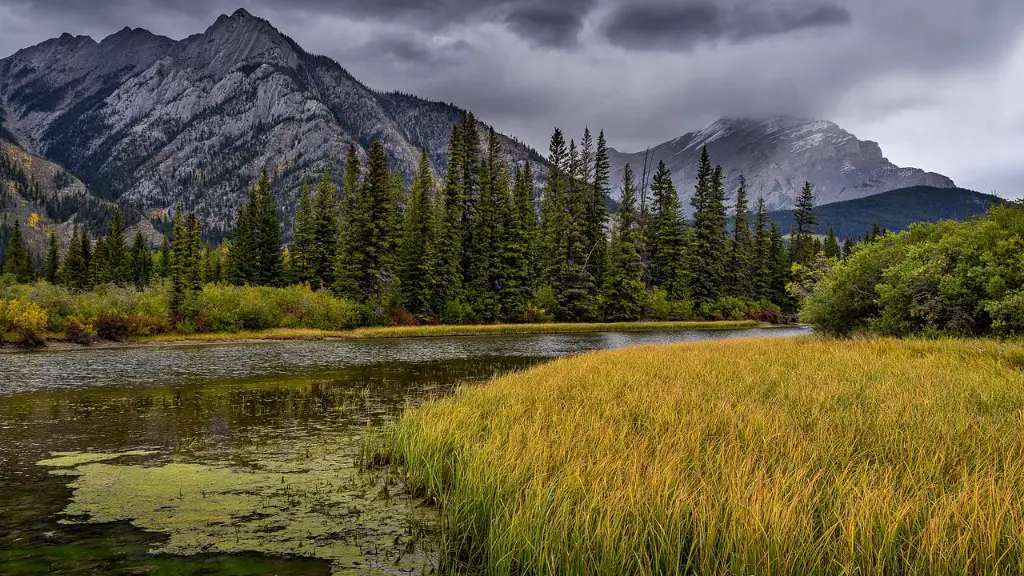Background Information
The Mississippi River is one of the most iconic and well known rivers in the United States. Spanning from the northerly source in Lake Itasca, all the way to the Gulf of Mexico, the Mississippi River is one of the longest rivers in the world, which means it passes through — and connects — many states. It is known for being an important economic resource, providing transportation for both freight and people. Additionally, the natural beauty of the river also makes it a popular destination for leisure activities.
The States the Mississippi River Runs Through
The Mississippi River runs through a total of ten US states: Mississippi, Louisiana, Missouri, Kentucky, Tennessee, Illinois, Arkansas, Iowa, Minnesota, and Wisconsin. The headwaters of the river are in Lake Itasca, located in the state of Minnesota. From there, the river begins its winding journey southward, eventually entering the Gulf of Mexico in Louisiana.
The Importance of the Mississippi River
The Mississippi River has been an integral part of American culture and industry since it was first explored by Europe settlers. It has played a major role in both the industrial and agricultural development of the United States. It has been used for transportation and communication throughout American history. This is specially true for states such as Arkansas and Missouri, which rely heavily on the river for commerce and navigation. Additionally, the Mississippi River is a major component in the national water infrastructure, playing a major role in irrigation, hydropower and flood control.
Economics and Culture Along the Mississippi River
The Mississippi River has long been an important economic engine for many of the states it runs through. In recent years, cities along the river have been developing vibrant commercial districts filled with shops and restaurants. These cities, especially those in the Midwest, have benefited from the inexpensive shipping costs provided by the river, allowing them to remain competitive with the larger cities on the coasts. Additionally, many of these cities are popular vacation spots and are home to famous landmarks.
The Mississippi River is also important culturally, playing a major role in the music and art of the states it runs through. Multiple musical styles, such as Delta blues, had their origins along the banks of the Mississippi, and the importance of the river is seen in many of the popular musicians who have emerged from the region. Additionally, the river has inspired painters, writers, and filmmakers to depict its beauty and economic importance.
The Environmental Impact of the Mississippi River
The Mississippi River is an important source of fresh water, providing habitats for numerous fish and wildlife species. Unfortunately, pollution and over development have taken a toll on the river, and it is now facing significant environmental challenges. Sedimentation, nutrient pollution, and toxic runoff have all caused water quality problems. In addition to this, industrial and agricultural runoff can cause harm to the wildlife species in the river.
Restoration Efforts Along The Mississippi River
In an effort to protect the river, environmental groups are working to encourage sustainable management of the Mississippi. Through their efforts, they hope to restore and improve water quality and preserve the unique habitats located along the river’s banks. Additionally, they are advocating for better regulation of activities such as agriculture, stormwater management and urban runoff.
Conclusion
The Mississippi River is an important natural resource that affects the culture, economy, and environment of the ten US states it runs through. While it has suffered from over development and pollution, it still remains an iconic and important component of American history. Restoration efforts are underway to protect the river and ensure its future health.
Effects of Climate Change on the Mississippi River Region
Climate change is having a significant impact on the Mississippi River system. One of the most obvious changes is the rise in sea level, which is impacting the coastal regions of the river, threatening their habitats and communities. Additionally, changes in temperature are affecting the seasonal dynamics of the river, and more extreme weather events — such as floods, droughts, and storms — are becoming more frequent and intense.
Agricultural and Fisheries Issues
Agricultural and fisheries industries along the Mississippi River are being impacted by changes in climate. Areas of the river are becoming warmer, leading to changes in fish species and increasing algae growth, both of which can have a significant effect on the agricultural industry. Additionally, rising seawater levels are threatening coastal communities, as well as disrupting fisheries operations upriver.
What Can Be Done?
Given the scale of the problem, the solution must involve a multi-faceted approach with strong governmental oversight. In order to keep the river healthy and safe, it is essential that governments work to reduce greenhouse gas emissions and make a concerted effort to reduce the environmental impact of human activity in the region. Additionally, improved infrastructure and better regulations must be implemented in order to protect vulnerable areas and ensure sustainable resource management.
Economic Development
The Mississippi River has long been an important economic driver for many of the states it runs through. In order to protect the region’s economy, it is important that new investments be made in infrastructure and sustainable resource management, such as renewable energy sources and improved water quality management. Additionally, more regional collaboration is needed in order to promote regional economic development and ensure that the river remains a vital economic resource for the future.
Environmental Justice Issues
Environmental justice issues arise from unequal access to resources and decision-making power. In the case of the Mississippi River, these issues disproportionately affect communities of color and low-income households. It is imperative that governments invest in policies and regulations designed to protect the environment and promote the well-being of vulnerable communities in the region. Additionally, increased public and civic engagement can help ensure that all voices are heard in the decision-making process.



